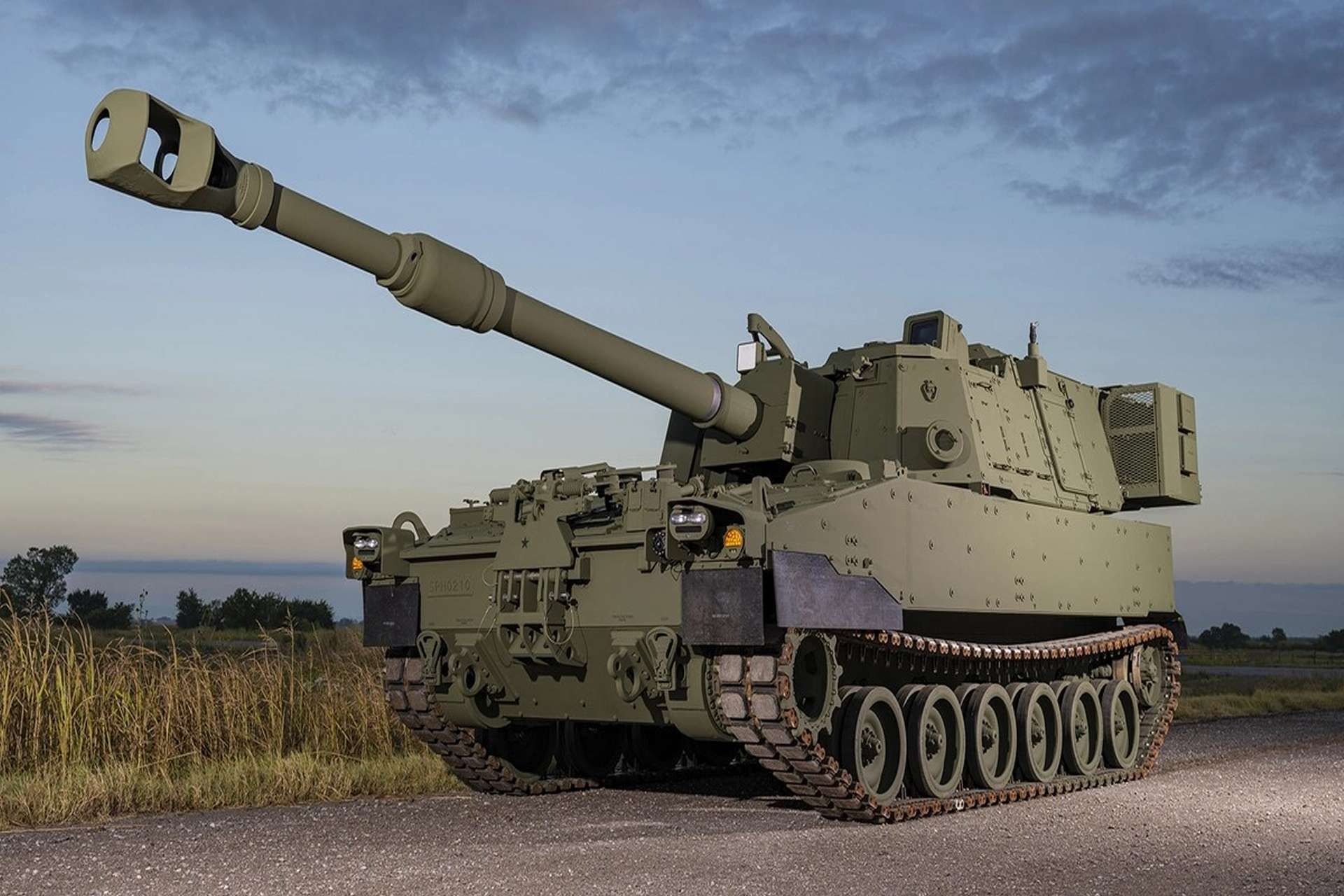Breaking News
US Army Awards Major Contract to BAE Systems to Produce More M109A7 Paladin Howitzers and M992A3 Resupply Vehicles.
BAE Systems secured a USD 493 million (EUR 452 million) contract to continue the production of M109A7 self-propelled howitzers and M992A3 ammunition carriers for the US Army, the company announced on August 2, 2024. This contract covers the production and delivery of these equipment between August 2025 and July 2026.
Follow Army Recognition on Google News at this link

BAE Systems M109A7 Self-Propelled Howitzers (Picture source: BAE Systems)
It is worth noting that on July 3, 2024, BAE Systems was awarded a USD 579 million contract for the production of M109A7 self-propelled howitzers and M992A3 resupply vehicles. This contract follows a USD 58 million contract awarded on May 17, 2024, for additional production of these models. These contracts align with the US Army's proposed improvements for the M109 Family of Vehicles (FOV).
The first program includes several modifications aimed at improving the M109 Family of Vehicles, specifically the M109A6 and M109A7 self-propelled howitzers and the M992A2 and M992A3 field artillery ammunition supply vehicles. These changes align with the US Army’s Long-Range Precision Fires modernization priorities. The modifications include engineering design, testing, hardware procurement, and application to resolve field-identified issues, aiming to maintain operational readiness rates, enhance safety, and integrate new equipment.
Program management will extend across various units and facilities, including 16 Active Duty Army and National Guard Battalions, 10 Army Fires Brigades, three rotational unit sets, four Army Prepositioned Stock sets, two Institutional Training Sites, two Combat Training Centers, and other associated facilities. Planned improvements include the Interior Blast Mitigation Retrofit for the M109A7, which involves installing improved floor mats and ammunition restraints to prevent secondary projectiles during underbody blasts. The Chief of Section Protection modification introduces ballistic risers and transparent armor to enhance situational awareness and personnel survivability. Additionally, the Ventilation System Dust Cover modification incorporates a pre-filtration design to prevent system clogs, and the SPH Crew Compartment Automated Fire Extinguishing System Retrofit extends fire suppression coverage to the entire crew compartment.
Other modifications involve redesigning the driver’s seatbelt and hatch to improve restraint reliability and reduce leaks, enhancing vehicle safety and usability. The Universal Mounting Bracket hardware modification supports current and future inertial navigation units, and the AFES Control Electronics Panel modification updates software and firmware for enhanced compatibility. Funding will also support hardware procurement necessary for executing these Modification Work Orders and ensuring equipment readiness, with program management overseeing configuration management, field data analysis, and developing strategies to address supply base shrinkage.
These modifications to the M109 FOV are part of the US Army’s broader effort to modernize its fleet of self-propelled howitzers and associated resupply vehicles. The Paladin Integrated Management (PIM) program, designated as an Acquisition Category IC Major Defense Acquisition Program, aims to ensure the M109 FOV remains integral to armored and fires brigades. The PIM program involves replacing the current M109 Family of Vehicles, specifically the M109A6 and M992A2, with the newer M109A7 and M992A3 models.
The PIM system includes two vehicles: the M109A7 SPH, which incorporates new system characteristics, and the M992A3 CAT, which shares components with the M109A7 but excludes those directly related to the cannon system. These vehicles will replace the existing M109 FOV on a one-for-one basis within cannon fire battalions in the Armored Brigade Combat Team formations and in Echelons Above Brigade. Fielding will continue until the Army Acquisition Objective of 689 sets is achieved.
The PIM program addresses capability gaps left by the termination of the Non-Line of Sight Cannon program in June 2009. It resolves obsolescence and issues related to size, weight, and power in the current M109 FOV fleet. The vehicles under the PIM program integrate the suspension and drivetrain of the Bradley Fighting Vehicle, electric gun drive systems from the Future Combat Systems program, and current armament systems into a new chassis. This integration provides improvements in force protection, survivability, and mobility over the M109A6 and M992A2 models.


























